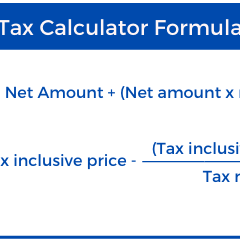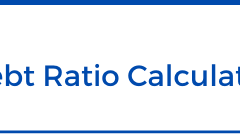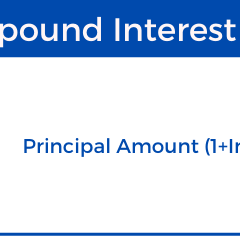Loan Amortization Calculator
Using Loan Amortization calculator, you can easily calculate the amount you need to pay per month based on the loan amount, interest rate, and loan terms that include year and month, compound, and payback period.
We also refer this loan amortization calculator to as an amortization schedule calculator that helps you to estimate your monthly loan repayment amount, total interest amount, and total number of payments till fulfillment. This calculator also shows you a chart with values (expressed as a percentage) where you can see how much of your repayment goes to your principal and how many take up the interest.
To calculate, simply enter your loan amount, interest rate, loan terms, and click on ‘Calculate’. The results will display your payment amount, total interest amount, and the number of repayments involved.
What is Loan Amortization?
Loan amortization refers to a type of loan where scheduled, periodic payments include both principal amount and the interest applied. Under the amortization method, the borrower needs to pay off first the applicable interest expense for the period, and second, the rest of the total payment is paid by reducing the principal amount till the loan ends. The most popular examples of amortized loans are home loans, auto loans, and personal loans from a bank.
There are two general definitions of amortization. First, Amortization is the systematic repayment of a loan over a periodic time. We use the second definition in the business accounting’s context. It is an act of distributing the cost of a big loan over many periods and makes it long-term. We have explained these two definitions in the below section.
How an amortization works?
We calculate the amortized loan based on the most recent ending balance of the year. However, the interest amount decrease as the borrower pays off the loan, eventually. This is because making any payment over the interest amount owed reduces as we make the payments. Therefore, reducing the balance from which we derive the interest. Interest and principal have an inverse relationship within the payments all along the loan life. As the interest part of an amortized loan decreases, the principal portion increases.
An amortized loan results from an array of counts.
- First, the current loan is multiplies to the interest rate applied on the current period to calculate the interest to be paid for the period.
- You can also calculate the monthly rate by dividing the annual interest by 12.
- Now, to get the amount of principal paid in the duration, subtract the interest due from the total monthly payment for the period.
- After you get the value of principal paid in a period, apply it to the rest of the balance of the loan. Therefore, subtract the amount of principal paid in a period by the current balance of the loan.
- A new outstanding loan will result. This amount helps in calculating the interest for the next period.
Basic terms for Loan Amortization Calculator
Loan Amount
In this field, enter the amount of the money you owe as a loan from a bank. Loan amount refers to the principal amount that is to be repaid back on a monthly periodic basis.
Interest Rate
It’s normal that all loans include interests. Interests are basically the profit that a bank or other lender makes on the loan. In most cases, the interest is paid along with the principal repayment. It is usually expressed as a percentage APR, therefore, Annual Percentage Rate, including both the interest and fees.
Loan Terms
Loan term is the duration of the loan given, in which you have to pay off the principal along with the interest periodically. The term of the loan affects the loan structure in various respects. For instance, the long-term loans will result in paying more interest over time, therefor, raising the total cost for borrowing the loan. However, long-term loans reduces the burden of higher periodic payments.
Compounding Frequency
Compound interest is the interest received from both the initial principal amount and accrued interest from preceding periods. We can say, as the compounding frequency concentrates, the total amount due on the loan increases. In most of the loans, compounding is seen monthly.
You can easily use our Compound Interest Calculator to calculate or learn more about compound interests.








